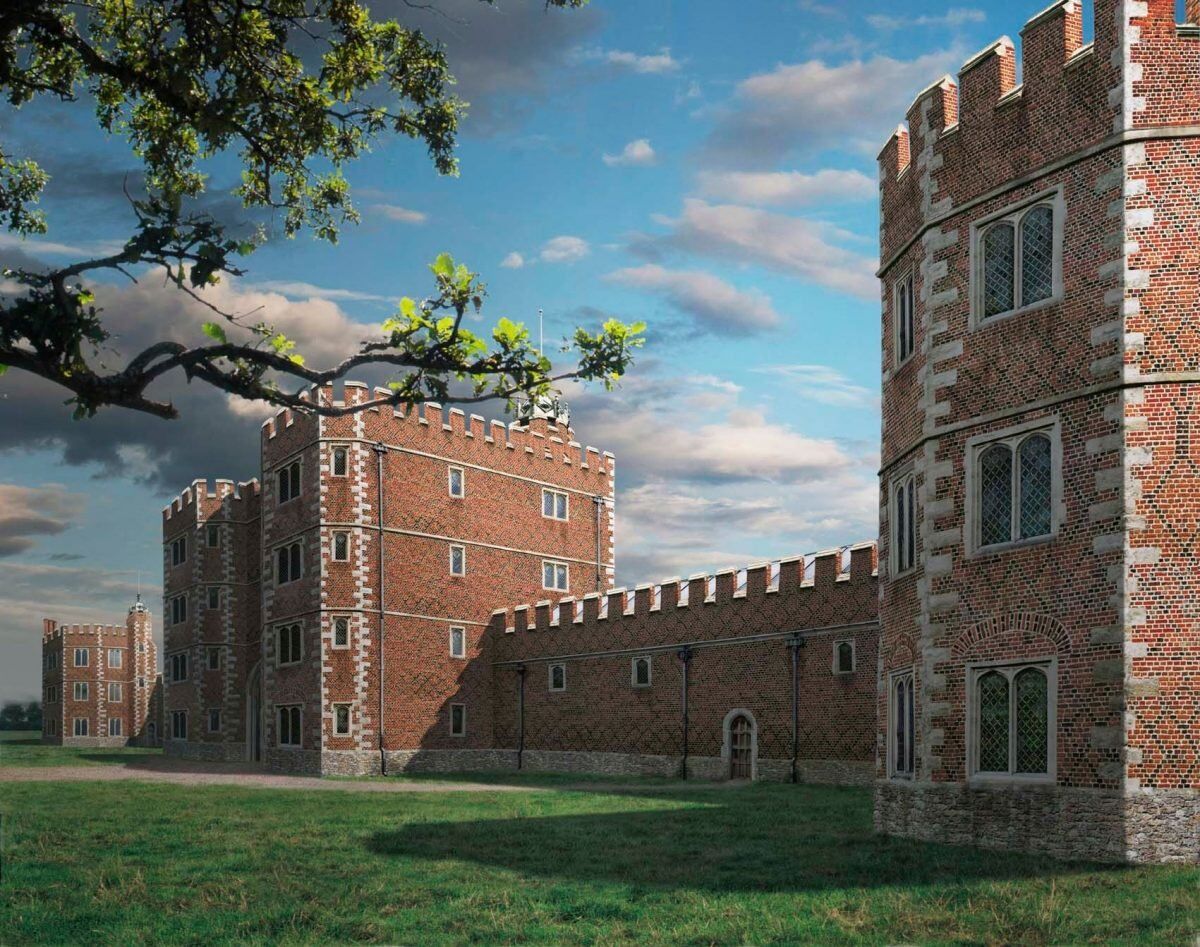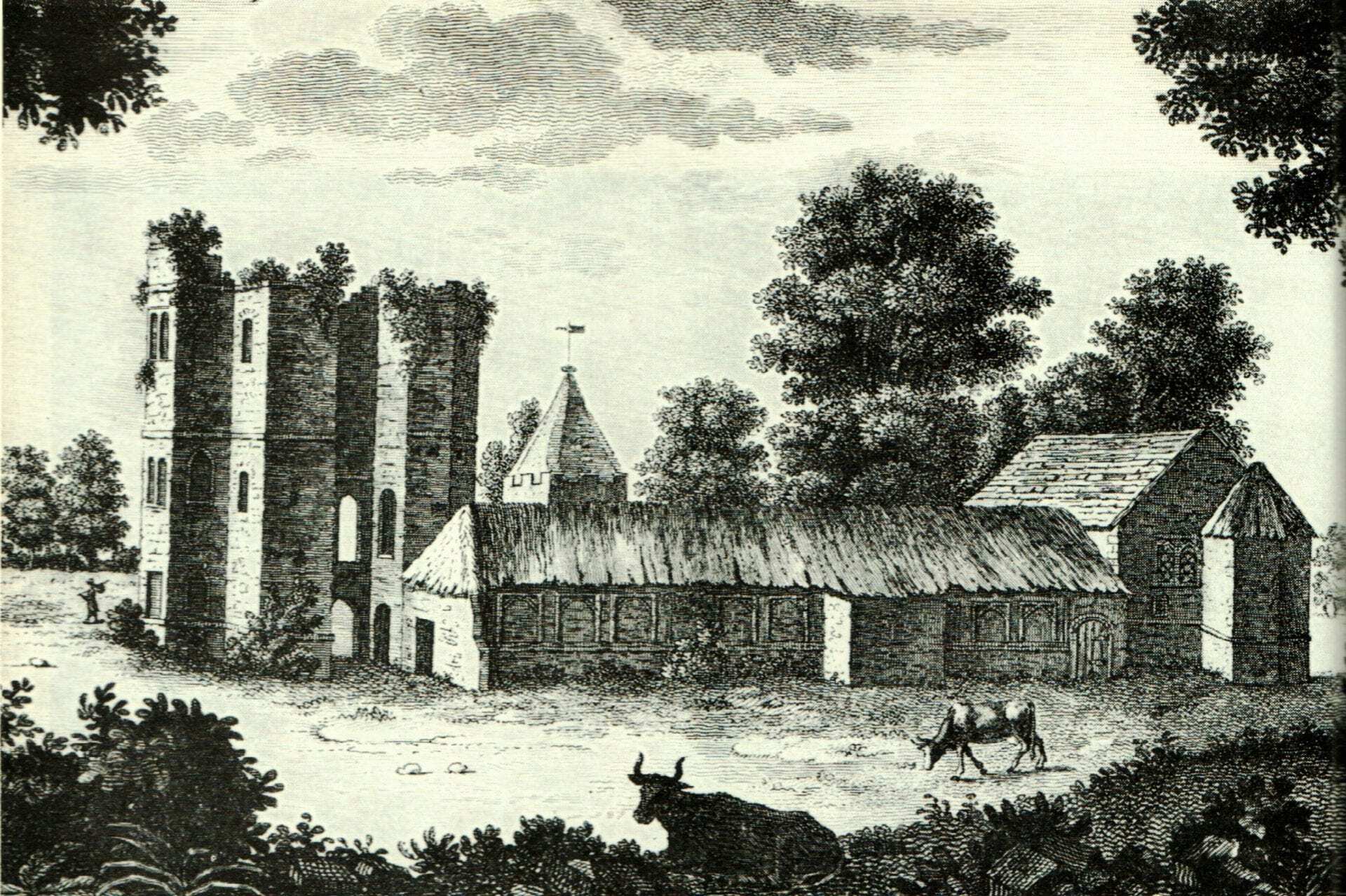In the article “The Lost Palace of Henry The VIII” Diarmaid Walshe tells the story of the Lost Palace of Henry VIII up to the death of Archbishop Warham in 1532.
This article takes us onwards through the gradual deterioration of the buildings over the following four centuries to the start of its rebirth as a site of significant historical interest and an interpretation centre for the history of Otford and the Darent Valley.
Thomas Cranmer succeeded Warham as Archbishop in 1553 and began his work on the English Book of Common Prayer the following year. It is tempting to claim that the book was written in the North-West Tower but perhaps the reality is that some of it was written (or revised) while he was resident in the Palace!
Henry VIII acquired Otford Palace in the course of the English Reformation and in 1537 it became a Royal Palace with the title The Honour of Otford. Although Henry spent some money on it, it was not enough and the fabric deteriorated. Cardinal Reginald Pole, the last Roman Catholic Archbishop of Canterbury lived there from 1553-1558 – the last of 56 Archbishops of Canterbury to occupy the Palace.
Elizabeth I was not very interested in Otford, and over the years it fell into disrepair. In 1761, the North East Tower of the Palace was demolished and the stonework carried to Knole, Sevenoaks, where it was used to build Knole Folly which lies to the South-East of Knole House. Over the years it was used as a farm with the remaining part of the North Range turned into a cattle shed. (The cottages between the Tower and the Gatehouse, were a Victorian conversion).
It was listed as a scheduled monument in 1928, and in 1935 the site and the buildings were transferred to Sevenoaks Rural District Council (now Sevenoaks District Council – SDC). In the early 1960’s some extensive repair work was carried out. Unfortunately, the builders used cement instead of traditional mortar and we are still suffering the consequences of this error. After this, the site remained untouched until 2015 when further repair works were needed to replace decaying masonry, remove the cement mortar – and put a roof on the Tower.
In 1973 work started to build four houses on Bubblestone Road on the South East corner of the Palace site, and then a sharp-eyed individual noticed old foundations on the building site. The area (now included within the scheduled monument) was excavated and this revealed the remains of the South East Palace Tower as well as underlying structures – Romano-British remains, the 12th and 13th Century Manor House, and the 14th Century Manor House. The Palace has a very long history.
For many years the Palace has been an iconic symbol of Otford and there have been discussions on what might be done to preserve it as a community asset. In the spirit of carpe diem the Archbishop’s Palace Conservation Trust was formed as a charity in 2017 with the objectives of:
1 – Subject to the assent of Historic England and with the agreement of Sevenoaks District Council, to have the freedom to maintain and develop the Palace buildings and their grounds.
2- To assemble the talents, finance and management skills required to build and manage a self-sustaining centre for the dissemination of knowledge about our Tudor and our Valley’s heritage.
3 – To develop a lasting heritage landmark within the Sevenoaks region.
Two years later the Trust was granted a 99-year lease by SDC. The good news was that we had the lease: the bad news was that we now had to raise a significant sum of money and achieve our objectives!
In summary, the plan is to conserve the North-West Tower, reinstate the missing floors and the spiral staircase and add a small atrium on the Southside of the Tower as an entrance and shop. The ground floor will be a museum and interpretation centre, the first floor will be used as an exhibition space and the top floor will be a library and archive. The Gatehouse will, in time, become a secure study centre for school parties and other visiting groups. You can find out more from the Trust’s business plan which can be downloaded from the website at otfordpalace.org.
However, the best-laid plans can be disrupted by global pandemics and an early consequence of the lock-down was that the major funding agencies put their programmes on hold (except for emergency funding for those already in receipt of grants. We now have an enforced twelve-month delay on the building programme and it is unlikely that the work will be completed before the end of 2024. But what is another year in the 1200-year history of the Palace?
Yet the lock-down has had some benefits. It has enabled us to make progress with the planned merger of the Trust and the Otford Heritage Centre which will give the Centre a purpose-built home in the North-West Tower and also enable us to work towards ‘accredited museum’ status.

Diarmaid Walshe drew the obvious parallels between Otford Palace and Hampton Court. Unlike Hampton Court. Relatively little of Otford Palace remains above ground, and this present us with challenges for interpretation. How can we show visitors what the site and buildings would have looked like 500 years ago? One solution is the scale model built by Rod Shelton, but we are also looking at the technologies of augmented reality and photogrammetry to build virtual 3D models for visitors to explore.
There is far more that could be said about the history of the Otford’s Palace and our plans for the future than is possible in a short article. The story continues…
Written by Nick Rushby
Nick’s background is as a consultant in the field of learning technology and he is currently a visiting professor at the Federal University of Kazan (about 800km to the East of Moscow) where he specialises in helping staff and students in research and scholarly publication.
He became interested in the Archbishop’s Palace when he moved to Otford a little over seven years ago, and, with others, formed a group whose aim was to conserve the site and buildings for the community as an interpretation centre and museum. He was one of the founding trustees of the Archbishop’s Palace Conservation Trust.
He makes no claim to be a historian or archaeologist; his knowledge of Tudor history and architecture is the result of a crash course over the past five years! However, he is a passionate advocate for Otford’s Hidden Palace with a commitment to seeing its future as a centre for the interpretation of the history of the Darent Valley.
The Archbishop’s Palace Conservation Trust
Archbishop’s Palace Conservation Trust was formed as a CIO in 2017 with the objectives of:
1 – Subject to the assent of Historic England and with the agreement of Sevenoaks District Council, to have the freedom to maintain and develop the Palace buildings and their grounds.
2 – To assemble the talents, finance and management skills required to build and manage a self-sustaining centre for the dissemination of knowledge about our Tudor and our Valley’s heritage.
3 – To develop a lasting heritage landmark within the Sevenoaks region.
Its aim is to conserve the Archbishop’s Palace and create an interpretation centre and museum for Otford and the Darent Valley. Further details are available at otfordpalace.org.
Header Image – View from southwest of remains of the Tudor northern range from an 18thC engraving by I Bayly – © Archbishop’s Palace Conservation Trust





